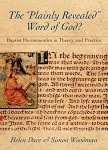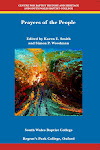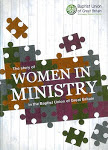A Sermon for Bloomsbury Central Baptist Church
Sunday 29 October 2023
1 Kings 12.1-17, 25-29
Dramatis Personae:
- David - King over the united tribes of Israel; father to Solomon, grandfather to Rehoboam.
- Rehoboam - King of the southern Kingdom of Judah after the split of the united Kingdom of Israel. His capital city was Jerusalem.
- Shechem - First capital of the northern Kingdom of Israel.
- Jeroboam - First king of the northern Kingdom of Israel.
- Ahijah the Shilonite - a Levite prophet of Shiloh in the days of Solomon.
This week I was interviewed for a podcast on leadership, on the practice of leading,
and as I have prepared myself for the interview over the last couple of weeks,
I’ve been thinking about what kind of leader I am,
what my instinctive and distinctive style is,
and what I can learn to be a better leader.
Interestingly, the podcast that asked me to contribute isn’t a Christian one,
its audience is secular leaders,
and looking back over recent episodes,
I found they had focussed on a range of different leadership styles.
So, they had identified: the influential leader, the motivational leader,
the self-aware leader, and intriguingly the autistic leader.
But what they wanted me to speak about, from a Baptist Christian perspective,
was the idea of being a ‘servant leader’.
This is certainly a biblical image,
and it’s something that people often bring up
when thinking about leadership in Christian institutions.
We say that we want leaders after the pattern of Christ,
who came, as the song so memorably puts it, not to be served but to serve.
In the Baptist tradition, we even use the word ‘Minister’ for our ordained clergy,
a word which comes from the Latin word for ‘Servant’,
something our Government Ministers could well remember!
We use this rather than words like vicar or priest,
which infer an intermediary function,
with the clergy standing between the congregation and God,
or pastor or rector,
which infer a sense of shepherding leadership.
But what actually is ‘servant’ leadership?
Well, we get an inverse example of it in our reading for this morning,
as we continue our way through the Hebrew Bible this autumn.
This is story of leadership gone wrong, over multiple generations,
and of the catastrophic effects that bad leadership has
on the people of the land of Israel,
as the nation divides against itself
as a response to oppressive, destructive, violent, and self-serving leaders.
Sometimes, we can learn as much from bad examples as from good ones,
as much from the terrible leadership exercised by the kings of ancient Israel,
as from the Messiah who embodied what it is to be the ‘Servant King’.
And in our world, bad leadership often seems all around,
from far-right nationalistic leaders, to profit-driven business leaders,
from leaders who are quick to war and violence,
to leaders who are indecisive in defence of the weak.
The British literary critic Terry Eagleton addresses this trend in his book ‘On Evil’,
in which he says,
'Evil is a form of transcendence,
even if from the point of view of good it is a transcendence gone awry.
Perhaps it is the only form of transcendence left in a postreligious world.
We know nothing any more of choirs of heavenly hosts,
but we know about Auschwitz.
Maybe all that now survives of God
is this negative trace of him known as wickedness,
rather as all that may survive of some great symphony
is the silence which it imprints on the air
like an inaudible sound as it shimmers to a close.
Perhaps evil is all that now keeps warm the space where God used to be.' [1]
And I wonder if this perhaps has always been the case,
that when we read of terrible leaders such as Rehoboam and Jeroboam,
and all the other ‘bad kings’ of the books of the Kings in the Hebrew Bible,
what we find in their despotism is the echo of a hope,
a hope and a dream and a memory that things don’t have to be this way,
that another, better, way of being human is possible.
Just as many in our world “know nothing any more of choirs of heavenly hosts,
but we know about Auschwitz,”
so too, the Israelites in the northern kingdom in the turmoil after Solomon’s death
knew little or nothing about covenant loyalty and temple worship,
but they knew about Jeroboam’s golden calves (1 Kings 12:25-33).
All that survived of the worship of God in this time
was “this negative trace of him known as wickedness,”
which was made known to the bad kings and their subjects
by the prophets who cried against the apostate altars
proclaiming in their time the word of the Lord (1 Kings 13:1-3).
And I wonder if, in our time of evil in our world,
of leadership gone awry and death stalking the world,
whether this story from the time of ancient Israel,
can help us trace the negative imprint of God in our world,
and draw from us the prophetic voice of the word of God.
So, to 1 Kings!
It’s a complicated story, not least because of all the names,
and I hope you found the ‘Dramatis Personae’ in the order of service helpful,
so let’s spend a few minutes with it, and see what themes emerge.
Precedents for the tragic story of a divided Israel
were set long before the arrogant choices
of Solomon’s son, Rehoboam,
and his rival, Jeroboam.
King Saul, who started out as a ‘good king’, but ended as a ‘bad king’,
(as Sellar and Yeatman might put it)
had begun the process of uniting the various tribes of Israel,
and King David,
who managed to be both a ‘good king’ and a ‘bad king’ at the same time,
completed the process,
making Jerusalem, a city located in the land allocated to the tribe of Judah,
the capital city of the whole united Israel.
Through the reigns of these first two kings, Saul and David,
Israel had remained conscious of their identity and tribal land allotments. [2]
Saul’s inauguration as a warrior king
had loosely united the tribes against the Philistines and other enemies.
And when Saul died, David was made king at Hebron by his own tribe, Judah,
but struggled with what at that time with the other tribes,
who were known as ‘the house of Saul’,
until eventually, seven years later, they confirmed his rule over them
(2 Samuel 3:1, 6, 17; 5:1-5).
Much later in David’s reign, the rebellious cry, “Every man to his tents, Israel,”
was shouted in rejection of an aging David’s leadership,
showing that the other tribes still retained a sense of separateness
from Judah and it’s capital in Jerusalem (2 Samuel 20:1-22).
This Israel-Judah distinction was further magnified
when Solomon levied taxes,
and forced all the tribes into labour except Judah (1 Kings 4:7-19; 5:26-32).
Solomon became like Pharaoh,
using his people, especially those not from his tribe of Judah,
to support his huge household
and to establish cities, forts, and trade with other peoples.
Judah was consistently favoured while the remaining tribes of Israel were afflicted,
even to the extent that some of Israel’s northern territories
were given to Hiram of Tyre (1 Kings 9:10-14).
The most critical crack in the ostensibly united kingdom under Solomon
was created by Solomon’s idolatry and apostasy.
Despite his reputation as a wise ruler and a ‘good king’,
the biblical account tells of him turning away
from his early humble dependence upon The Lord (1 Kings 3)
to worship other gods (1 Kings 11:1-8).
So serious was this, that The Lord intervenes just a chapter before our reading for today,
warning Solomon that most of the kingdom would be torn from his son
and given to the usurper Jeroboam (1 Kings 11:9-12, 26-39).
And yet, in our passage today from 1 Kings 12,
nonetheless “all Israel” came to Shechem
to install Rehoboam, Solomon’s son, as king after Solomon died.
Situated in the narrow pass between mounts Gerizim and Ebal,
Shechem is now known as Tel Balata,
near Nablus in the Occupied Palestinian Territory of the West Bank,
and it is the home of a small community of Samaritans.
This confirmation of Rehoboams kingship at a city outside of Jerusalem,
outside of Judah in fact, was clearly felt to be necessary,
given the strength of the northern tribes
and their historic identity as separate from Judah.
And so our story pick up with a complaint,
as the northern tribes of Israel brought a critical question for Rehoboam.
As the condition for their continued support of the Davidic dynasty,
they asked Rehoboam to lighten their hard service,
the heavy yoke his father had laid upon them.
Rehoboam, in a moment of good leadership,
shrewdly asked for time to consider their demand,
but he did not turn to The Lord or to the prophets for advice.
Instead, Rehoboam first consulted the elders
who had stood before his father Solomon as advisors.
They attempted to teach Rehoboam diplomacy
by shrewdly pointing out that Israel would be his servants forever
if he would be a servant to them today.
They advised him to give them ‘good words’,
and their answer indicates that they may have opposed Solomon’s policy
of consistently exacting a heavy toll from his subjects,
and that they knew this approach would appease Israel and retain kingdom unity.
This is the ‘servant leadership’ example found in this passage,
but it’s a very long way from the example of Jesus,
and I’m not sure it’s something I’d seek to emulate in church life.
The elders may have been politically cunning,
but feigning service to extract loyalty isn’t true servant leadership.
This is more what one might expect of an expedient and pragmatic national leader,
as the elders saw the discontent of northern Israel
and knew that Rehoboam must ease their burdens, at least for a while,
in order to retain them as subjects.
Rehoboam, however, somewhat surprisingly, rejected this sage advice;
instead he turned to “boys,” those who had grown up with him.
The narrator shows his contempt for the king’s young friends
by repeating the phrase: “the children who had grown up with him.”
These inexperienced youth suggested to Rehoboam
a harsh answer to Israel’s request that their yoke of service be lightened:
The crudity of the statement about his little finger being thicker than his father’s loins,
is amusing if you have the humour of a 14-year-old boy,
but as an act of international diplomacy
it smacks of the leadership style of Donald Trump at his finest.
The obvious meaning is: “My father’s yoke was heavy, but I will add to it!
His whips were brutal; mine will be worse.”
The contempt Rehoboam and his friends had
for the elders and their northern kin is clear.
Solomon, despite his reputation for wisdom,
had effectively brought his people back to Egypt, figuratively speaking;
enslaving them in the service of lavish building projects such as the Jerusalem temple,
reversing the mighty act of deliverance that God had done under Moses.
Rehoboam had the opportunity to become a servant-king
but chose instead to require even harsher service than Solomon had established.
At this point Jeroboam steps to the fore,
a kind of worker’s hero, a trades union leader,
someone standing up for the rights of the oppressed.
Israel’s choice of Jeroboam as their new king
one who, unlike Solomon, did not acquire horses, wives, or silver.
In the preceding chapter, The Lord had promised Jeroboam an enduring dynasty
if he would listen, do right, and walk in God’s ways (1 Kings 11: 37-39).
But instead, fearful of losing the loyalty of Israel,
he too turned his face back towards Egypt,
remembering the golden calves made by Israel
when Moses was up the mountain,
and Jeroboam erected golden calves in Bethel and Dan,
leading his people into the sin of idolatry (1 Kings 12:29-33).
Meanwhile, back in Judah, Rehoboam also went on
to build high places and other abominations,
continuing the evil that Solomon brought into the kingdom of God (1 Kings 14:21-31).
As I said, this story is an object lesson in bad leadership,
with leaders embracing violence, exploiting the weak,
and giving free reign to the sins of pride and avarice.
In many ways this is a story that rings true in our contemporary world,
with leaders in our time also prey to these same temptations.
The conflict between Israel and Gaza
finds its ideological roots in this story of a land and people divided,
and the challenge of the elders to find a way to give some ground today,
in order to win peace tomorrow,
is something that needs to be heard.
We need a move away from political posturing,
and an embracing of political process.
And the stark warning of Jeroboam and Rehoboam,
is that those who turn from God’s peaceful path
set in place patterns of violence that endure for generations.
Had Rehoboam been a servant ruler, even if only for a day,
had he listened to his elders,
eased the burdens Solomon had levied against his kin;
had he rejected Solomon’s Pharaoh-like policies
and embraced a better kind of leadership (Deuteronomy 17:14-20),
had he returned to the ways of righteousness,
and trusted in God’s mercy
then possibly the disaster that unfolded could have been averted.
And so we come back to the present,
to what it means to be a leader in our time.
I don’t think that the pragmatic expediency of the elders is what we are called to,
even though in the world of geopolitics
it would be infinitely preferable to what we often actually get from our leaders.
But we are called to something more than this.
Servant leadership, ministering among the people of God,
is something we need to discover together,
as we learn from the example of Jesus.
Servant leadership after the pattern of Jesus
is always about setting people free,
liberating them from whatever it is that oppresses them.
Jesus served people in such a way
that their lives changed by his encounter with them.
Robert Greenleaf originated the term ‘servant-leader’ in the 1970s,
and he said: [3]
“The servant-leader is servant first…
It begins with the natural feeling that one wants to serve, to serve first.
Then conscious choice brings one to aspire to lead.
That person is sharply different from one who is leader first,
perhaps because of the need to assuage an unusual power drive
or to acquire material possessions…
The leader-first and the servant-first are two extreme types.
Between them there are shadings and blends
that are part of the infinite variety of human nature.
The difference manifests itself in the care taken by the servant-first [leader]
to make sure that other people’s highest priority needs are being served.
The best test, and difficult to administer, is:
Do those served grow as persons?
Do they, while being served, become healthier, wiser, freer,
more autonomous, more likely themselves to become servants?
And, what is the effect on the least privileged in society?
Will they benefit, or at least not be further deprived?
A servant-leader focuses primarily on the growth and well-being of people
and the communities to which they belong.
While traditional leadership generally involves the accumulation and exercise of power
by one at the “top of the pyramid,”
servant leadership is different.
The servant-leader shares power,
puts the needs of others first
and helps people develop and perform as highly as possible.”
And, friends, this is a calling for each of us,
because as Baptist Christians, we share in the priesthood of all believers.
And so, because I know you’re wanting to know,
I think my personal style of leadership is two-fold,
it is collaborative, and it is strategic.
I hold leadership to be a task we do with others,
rather than the loneliness of command.
And I also think it is the task of the leader
to help their community achieve their shared goals,
to develop the strategies
that will get us from where we are, to where we want to be.
And, well, I guess you’ll be the judge of how well I do in this,
but the point is that this isn’t about me.
It’s about God, and about God revealed in the person of Christ,
and about God with us by the Holy Spirit,
calling each of us to works of ministry,
to service of others,
and through service to prophetic leadership
in a world that desperately needs to encounter a better way of being human.
[1] https://www.firstthings.com/blogs/firstthoughts/2010/06/what-if-the-problem-of-evil-isnt-a-problem
[2] The summary that follows draws on https://www.workingpreacher.org/commentaries/narrative-lectionary/kingdom-divided-2/commentary-on-1-kings-121-17-25-29-3
[3] https://www.greenleaf.org/what-is-servant-leadership/














